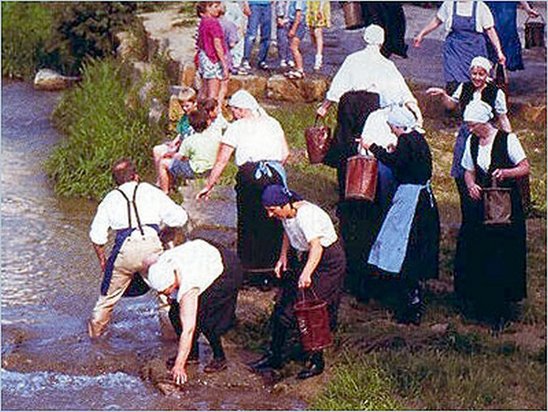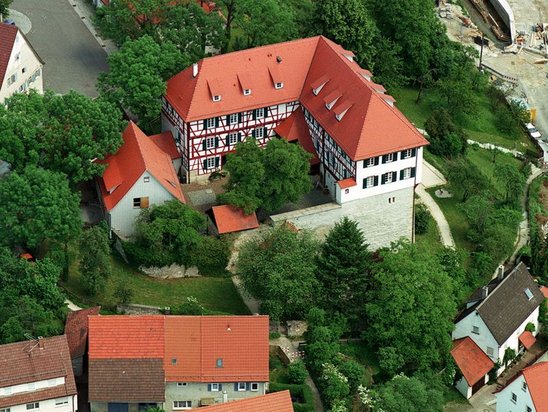The beginnings
The beginnings of this village go back to the time when the tribe of the Alemanen settled in this area, as is proofed by the ending -ingen of its name. Gomaringen is mentioned for the first time in the 11th century in the chronicle of Berthold of Zwiefalten. After the extinction of the counts of Achalm in 1191, members of the local gentry, which took the name after the village Gomaringen, are first mentioned.
They were Friedericus and Hugo de Gomaringen who were in the service of the Markgraf of Tübingen. A fort with glacis, the present day castle and other rights and properties belonged to the Lords of Gomaringen. The Gomaringen coat of arms has the eagle on a red background. Stockach, which now belongs to Gomaringen, once belonged to the Lords of Gomaringen.
Division of the property through inheritance
From the 13th through the 15th century the rulers of Gomaringen frequently appear as spiritual rulers. The most significant representatives were Werner and Peter of Gomaringen who were both abbots of Bebenhausen, the local monastery of the Markgrafs of Tübingen. The economical decline of the family began shortly after the middle of the 14th century caused by frequent division through inheritance and in addition the preference for spiritual power and its associated gifts, particularly to the monastery of Bebenhausen.
In the second half of the 15th century, after various changes of ownership, the whole previous Gomaringen property with all its rights and liegemen was transformed to the then prosperous hospital of the imperial town of Reutlingen. For 150 years bailiffs ran the affairs of the imperial city in the castle.
Local authority of Reutlingen
After the 30 Years War, whose hoorors also affected Gomaringen, Reutlingen, deeply in debt, sold in December 1648 “Gomaringen as its most noble village and castle” for 30.000 guildes to Count Eberhard III of Württemberg. Until 1807 Gomaringen remained directly answerable to the Prince and was administered by bailiffs of the castle.
After that it was incorporated into the district o Reutlingen until 1973. The official description of 1824 reports that Gomaringen was “the poorest parish with the most children”. So it is not surprising that from the end of the 18th century till the end of the 19th century 821 people emigrated especially to the USA.



